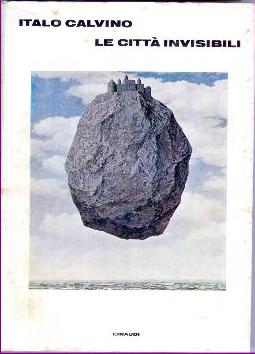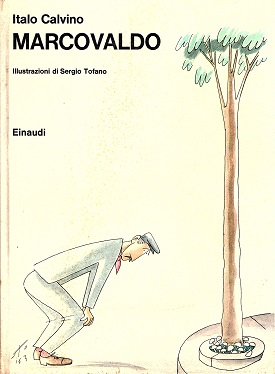
Italo Calvino was an Italian writer and journalist. His best known works include the Our Ancestors trilogy (1952–1959), the Cosmicomics collection of short stories (1965), and the novels Invisible Cities (1972) and If on a winter's night a traveler (1979).

Life A User's Manual is Georges Perec's most famous novel, published in 1978, first translated into English by David Bellos in 1987. Its title page describes it as "novels", in the plural, the reasons for which become apparent on reading. Some critics have cited the work as an example of postmodern fiction, but Perec preferred to avoid labels and his only long-term affiliation with any movement was with the Oulipo or OUvroir de LIttérature POtentielle.

If on a winter's night a traveler is a 1979 novel by the Italian writer Italo Calvino. The postmodernist narrative, in the form of a frame story, is about the reader trying to read a book called If on a winter's night a traveler. Each chapter is divided into two sections. The first section of each chapter is in second person, and describes the process the reader goes through to attempt to read the next chapter of the book he or she is reading. The second half is the first part of a new book that the reader ("you") finds. The second half is always about something different from the previous ones. The book was published in an English translation by William Weaver in 1981.

The Codex Seraphinianus, originally published in 1981, is an illustrated encyclopedia of an imaginary world, created by Italian artist, architect and industrial designer Luigi Serafini between 1976 and 1978. It is approximately 360 pages and written in an imaginary language.
Magic realism or magical realism is a style of literary fiction and art. It paints a realistic view of the world while also adding magical elements, often blurring the lines between fantasy and reality. Magic realism often refers to literature in particular, with magical or supernatural phenomena presented in an otherwise real-world or mundane setting, commonly found in novels and dramatic performances. Despite including certain magic elements, it is generally considered to be a different genre from fantasy because magical realism uses a substantial amount of realistic detail and employs magical elements to make a point about reality, while fantasy stories are often separated from reality. Magical realism is often seen as an amalgamation of real and magical elements that produces a more inclusive writing form than either literary realism or fantasy.

Invisible Cities is a novel by Italian writer Italo Calvino. It was published in Italy in 1972 by Giulio Einaudi Editore.
William Fense Weaver was an English language translator of modern Italian literature.

Timothy Harold Parks is a British novelist, translator, author and professor of literature.
Qfwfq is the narrator of many stories appearing in several works by Italian author Italo Calvino.

Andrea De Carlo is an Italian novelist. He has published almost two dozen novels, many of which have been translated.

Experimental literature is a genre that is, according to Warren Motte in his essay "Experimental Writing, Experimental Reading", "difficult to define with any sort of precision." He says the "writing is often invoked in an "offhand manner" and the focus is on "form rather than content." It can be in written form of prose narrative or poetry, but the text may be set on the page in differing configurations than that of normal prose paragraphs or in the classical stanza form of verse. It may also be entwined with images of a real or abstract nature, with the use of art or photography. Furthermore, while experimental literature was traditionally handwritten on paper or vellum, the digital age has seen an exponential leaning to the use of digital computer technologies.

The Baron in the Trees is a 1957 novel by Italian writer Italo Calvino. Described as a conte philosophique and a metaphor for independence, it tells the adventures of a boy who climbs up a tree to spend the rest of his life inhabiting an arboreal kingdom. Calvino published a new version of the novel in 1959.

Marcovaldo is a collection of 20 short stories written by Italo Calvino. It was initially published, in 1963, as Marcovaldo ovvero Le stagioni in città. The first stories were written in the early 1950s.

Kevin John Brockmeier is an American writer of fantasy and literary fiction.
Pintosmalto or Pinto Smauto is an Italian literary fairy tale written by Giambattista Basile in his 1634 work, the Pentamerone.

DamianPettigrew is a Canadian filmmaker, screenwriter, producer, author, and multimedia artist, best known for his cinematic portraits of Balthus, Federico Fellini, and Jean Giraud.

Fellini: I'm a Born Liar is a 2002 French documentary film written and directed by Damian Pettigrew. Based on Federico Fellini's last confessions filmed by Pettigrew in Rome in 1991 and 1992, the film eschews straightforward biography to highlight the Italian director's unorthodox working methods, conscience, and philosophy.

A classic is a book accepted as being exemplary or particularly noteworthy. What makes a book "classic" is a concern that has occurred to various authors ranging from Italo Calvino to Mark Twain and the related questions of "Why Read the Classics?" and "What Is a Classic?" have been essayed by authors from different genres and eras. The ability of a classic book to be reinterpreted, to seemingly be renewed in the interests of generations of readers succeeding its creation, is a theme that is seen in the writings of literary critics including Michael Dirda, Ezra Pound, and Sainte-Beuve. These books can be published as a collection or presented as a list, such as Harold Bloom's list of books that constitute the Western canon. Although the term is often associated with the Western canon, it can be applied to works of literature from all traditions, such as the Chinese classics or the Indian Vedas.
Enzo Fileno Carabba is an Italian writer with published works in Italy and abroad. He writes short stories, scripts for radio, librettos and children's books.














